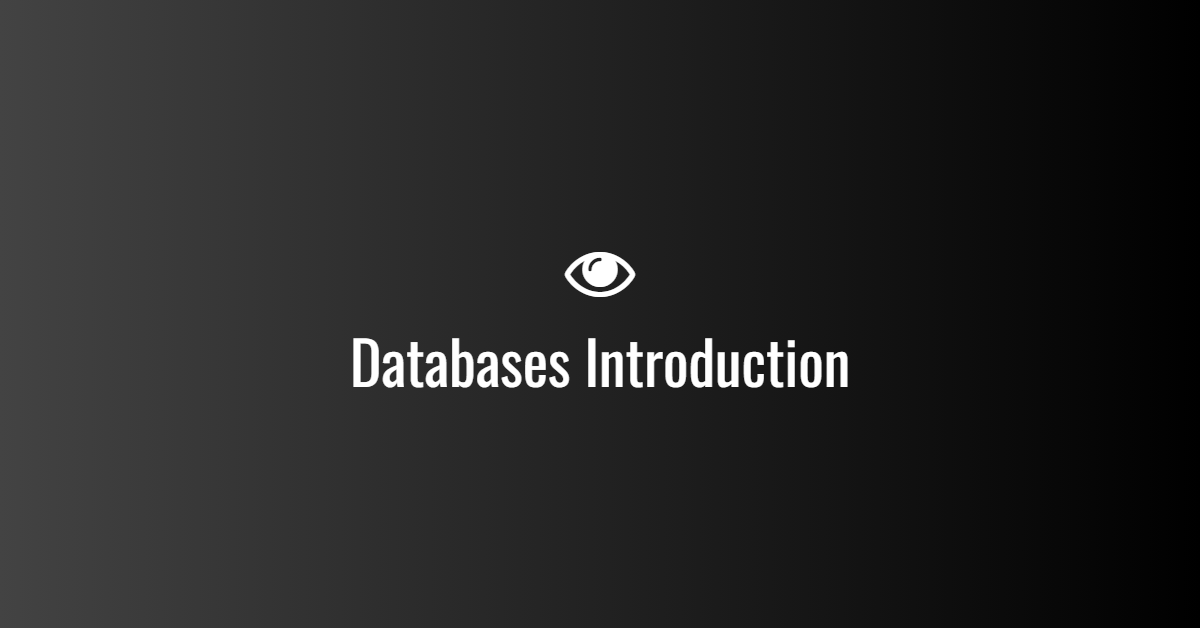
Databases Introduction
Introduction
In the digital age, data is one of the most valuable assets for businesses, organizations, and individuals. A database is an organized collection of data that allows for efficient storage, retrieval, and management of information. Databases play a crucial role in various industries, including finance, healthcare, e-commerce, and social media. This article provides a detailed overview of databases, their types, and how they function.
What is a Database?
A database is a structured system that stores and organizes data to ensure easy access and management. It allows users to perform operations like adding, updating, deleting, and retrieving data efficiently.
A database typically consists of tables, rows (records), and columns (fields). Each row represents a unique entry, while columns define the attributes of the stored data.
Types of Databases
There are several types of databases, each designed for specific use cases. Some of the most common types include:
- Relational Databases (RDBMS)
- Uses structured tables to store data.
- Data is organized using relationships (primary and foreign keys).
- Examples: MySQL, PostgreSQL, Microsoft SQL Server, Oracle Database.
- NoSQL Databases
- Designed to handle large-scale and unstructured data.
- Ideal for applications requiring high scalability and flexibility.
- Examples: MongoDB (document-based), Cassandra (column-based), Redis (key-value store).
- Hierarchical Databases
- Data is stored in a tree-like structure, with parent-child relationships.
- Commonly used in legacy systems and mainframes.
- Example: IBM Information Management System (IMS).
- Object-Oriented Databases
- Stores data as objects, similar to object-oriented programming.
- Useful for applications with complex data structures.
- Example: ObjectDB.
- Cloud Databases
- Hosted on cloud platforms, offering scalability and remote accessibility.
- Examples: Amazon RDS, Google Cloud Spanner, Microsoft Azure SQL Database.
Key Components of a Database
A database consists of several key components that ensure efficient data management:
- Tables: Store data in structured formats.
- Records (Rows): Individual entries within a table.
- Fields (Columns): Attributes that define the characteristics of data.
- Primary Key: A unique identifier for each record.
- Foreign Key: A reference to a primary key in another table, establishing relationships.
- Indexes: Speed up data retrieval by optimizing search queries.
Database Management Systems (DBMS)
A Database Management System (DBMS) is software that enables users to interact with databases. It provides tools for storing, modifying, and retrieving data efficiently.
Some of the most popular DBMS include:
- SQL-based DBMS: MySQL, PostgreSQL, Oracle, Microsoft SQL Server.
- NoSQL DBMS: MongoDB, CouchDB, Cassandra.
SQL vs. NoSQL: What’s the Difference?
| Feature | SQL Databases | NoSQL Databases |
|---|---|---|
| Structure | Table-based | Document, key-value, graph-based |
| Scalability | Vertical (scaling up) | Horizontal (scaling out) |
| Schema | Fixed schema | Dynamic schema |
| Use Cases | Traditional applications | Big data, real-time applications |
Why Are Databases Important?
Databases are essential for managing vast amounts of data efficiently. Some key benefits include:
- Data Organization: Ensures structured storage and easy retrieval.
- Data Integrity: Prevents duplication and maintains accuracy.
- Security: Protects sensitive information with access controls.
- Scalability: Accommodates growing data needs.
Conclusion
Databases are the backbone of modern applications, powering everything from websites to enterprise systems. Understanding different database types and their functionalities helps businesses optimize data management and make informed decisions. As technology advances, databases continue to evolve, offering faster and more efficient ways to handle data.


